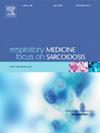The role of arterial stiffness as assessed by the cardio-ankle vascular index in patients with chronic obstructive pulmonary disease
IF 3.5
3区 医学
Q2 CARDIAC & CARDIOVASCULAR SYSTEMS
引用次数: 0
Abstract
Background
Arteriosclerosis and cardiovascular disease (CVD) can greatly affect the progression of chronic obstructive pulmonary disease (COPD). However, standardized methods for evaluating arteriosclerosis in COPD have not been established. The cardio-ankle vascular index (CAVI) is a reliable marker of arterial stiffness and a potential marker for assessing arteriosclerosis. This study aimed to examine the associations between the CAVI and clinical parameters and to evaluate its predictive value for clinical outcomes in COPD.
Methods
This retrospective, observational study included patients with COPD who underwent CAVI assessment. The relationships between CAVI and clinical parameters were analysed. The patients were stratified into two groups according to the median CAVI. We examined whether an elevated CAVI was associated with clinical outcomes and evaluated its predictive value for poor clinical outcomes, including disability (modified Rankin Scale score ≥4) or death.
Results
A total of 102 patients were analysed (median age: 74 years; 94.1 % men). The median CAVI was 9.4. The CAVI was positively correlated with the percentage of a low attenuation area on computed tomography and negatively correlated with FEV1 and body mass index, independent of age and the smoking index. An elevated CAVI (>9.4) was associated with severe exacerbations and poor clinical outcomes. A multivariate analysis identified the CAVI as an independent predictor of poor clinical outcomes, regardless of age, severity of dyspnoea, and airflow obstruction.
Conclusion
Arterial stiffness assessed by the CAVI is a useful marker of COPD severity and may serve as a prognostic indicator and therapeutic target for improving COPD management.
由心踝血管指数评估的动脉僵硬度在慢性阻塞性肺疾病患者中的作用
背景:动脉硬化和心血管疾病(CVD)可以极大地影响慢性阻塞性肺疾病(COPD)的进展。然而,评估COPD动脉硬化的标准化方法尚未建立。心踝血管指数(CAVI)是动脉硬度的可靠指标,也是评估动脉硬化的潜在指标。本研究旨在研究CAVI与临床参数之间的关系,并评估其对COPD临床结局的预测价值。方法本回顾性观察性研究纳入了接受CAVI评估的COPD患者。分析CAVI与临床参数的关系。根据中位CAVI分为两组。我们研究了CAVI升高是否与临床结果相关,并评估了其对不良临床结果的预测价值,包括残疾(改良Rankin量表评分≥4)或死亡。结果共分析102例患者(中位年龄:74岁;94.1%男性)。中位CAVI为9.4。CAVI与计算机断层低衰减区百分比呈正相关,与FEV1和体重指数负相关,与年龄和吸烟指数无关。CAVI升高(>9.4)与严重恶化和不良临床结果相关。一项多变量分析表明,无论年龄、呼吸困难的严重程度和气流阻塞如何,CAVI都是不良临床结果的独立预测因子。结论CAVI评价动脉僵硬度是COPD严重程度的有效标志,可作为改善COPD治疗的预后指标和治疗靶点。
本文章由计算机程序翻译,如有差异,请以英文原文为准。
求助全文
约1分钟内获得全文
求助全文
来源期刊

Respiratory medicine
医学-呼吸系统
CiteScore
7.50
自引率
0.00%
发文量
199
审稿时长
38 days
期刊介绍:
Respiratory Medicine is an internationally-renowned journal devoted to the rapid publication of clinically-relevant respiratory medicine research. It combines cutting-edge original research with state-of-the-art reviews dealing with all aspects of respiratory diseases and therapeutic interventions. Topics include adult and paediatric medicine, epidemiology, immunology and cell biology, physiology, occupational disorders, and the role of allergens and pollutants.
Respiratory Medicine is increasingly the journal of choice for publication of phased trial work, commenting on effectiveness, dosage and methods of action.
 求助内容:
求助内容: 应助结果提醒方式:
应助结果提醒方式:


